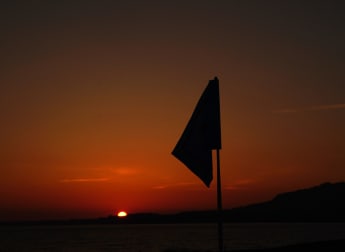Tony Johnstone is an enigma, a bona fide bundle of contradictions. The aimiable Zimbabwean is a fitness fanatic who smokes his way round the golf course. He is a small man whose lengthy arms should belong to a strapping six-footer. And he is blessed with sublime bunker play while being cursed by putting problems.
It should not come as a surprise then, that the 44 year old revelled in the ecstasy of a tournament victory a mere two months after wallowing in the agony of a form slump so severe, it made the former Volvo PGA champion give serious consideration to quitting golf altogether.
As always, the root of the problem for Johnstone was his putting. He had been striking the ball well and manoeuvring it cleverly around the course, but once on the green, it was a different story. Chance after chance slipped past the hole turning potential 66s into 72s and turning Johnstone’s thoughts to another career.
“I was in South Africa and I said to my wife that I wasn’t going to play another golf tournament until I found a way to putt,” he said. “It was probably a good thing because it galvanised me into action and made me try a couple of radical alterations.”
Catalyst for change was a meeting with his long-term friend and advisor Dr Ken West, a Doctor of Optometry with an acute eye for problem solving. Three years earlier West had advised Johnstone to cut back on caffeine as it was dehydrating his eyes, causing stigmatism. The Zimbabwean did as instructed and a fortnight later won the Alfred Dunhill South African PGA Championship at Houghton.
This time, during a day trip to Johnstone’s Sunningdale home, the University of Virginia-based academic spotted a problem with his alignment caused primarily by his elongated arms. Having arrived at a solution, based around holding the putter as if it were a sand wedge, Johnstone set off for a fortnight in The Gulf.
Armed with a new blade and a fresh desire for hard work under the tutelage of coach Simon Holmes, Johnstone’s new-found confidence manifested itself in the guise of a superb third round 63 in the Dubai Desert Classic at the Emirates Golf Club.
The encouraging signs were there and continued in the first round of the Qatar Masters where a steady four under par 68 left Johnstone in a share of 20th place, five shots adrift of joint leaders Robert Karlsson and Mark Pilkington.
The Swede and the Welshman had both tossed back their respective duvets long before light dawned on Doha, but the pain of such an act was quickly soothed by the benign early morning conditions, the absence of the traditional Shamal wind a major factor in their joint course record 63s.
While Karlsson was to feature in the higher echelons of the leaderboard for the entire tournament, Pilkington’s moment in the spotlight was brief, his second round 79 making sure of that, the former Welsh amateur champion eventually finishing tied for 46th.
A second round 70 saw Karlsson open up a two shot lead over his nearest challengers, Frenchman Olivier Edmond and New Zealander Elliot Boult, Johnstone’s own 70 moving him into the top ten as the tougher, windier conditions took hold.
Karlsson, whose three victories on The European Tour had come in the odd-numbered years 1995, 1997 and 1999, remained poised to continue the sequence with a third round 70 which saw him share the lead on 203 with Argentina’s Angel Cabrera going into the final afternoon.
Paisley’s Dean Robertson stood one shot adrift of the leading duo after his 68 but the most positive move was that by Johnstone, whose flawless 66, which featured three birdies in a row to finish, saw him join the Scot on 204. It was a telling thrust.
The final round saw the most demanding conditions of the week with the Shamal at its swirling peak. While most players groaned, Johnstone’s face creased into a wry smile as he threw back his bedroom curtains and saw the palm trees bent double.
“It definitely helped me,” he admitted. “I went to University in Durban which is a very windy town so I had a lot of experience in those conditions. It also negates the long game to a degree. In the wind it’s difficult to get the ball close and so everybody was going to miss greens. Then it’s down to the short game and that week my short game was as good as it’s ever been.”
Johnstone proved the point conclusively on the opening hole, pitching in from the back of the green for an audacious eagle three. It propelled him into the lead and into a position he was not to relinquish.
With Cabrera and Robertson failing to make ground and Boult having secured third place with a closing 71, the destiny of the championship rested in the hands of Johnstone and Karlsson.
The Zimbabwean grabbed the initiative at the 306 yards 16th where he drove the green before pitching and putting for a vital birdie three and a one shot lead. A crucial sand save at the 17th maintained his advantage before Johnstone found himself standing over a 12 foot birdie putt at the last.
The curling left to right putt, the most difficult for right-handers to read, would have been an impossibility for Johnstone eight weeks previously but such had been his progress, he stroked the ball with authority and dropped to his knees in delight as the ball found the centre of the cup.
He knew then Karlsson had to make an eagle to tie and although his pitch and run attempt was brave, it ran past the hole - the fact the Swede missed the return birdie effort a concern only for the statisticians.
Johnstone had won, and won well. The player bedevilled by putting woes had triumphed thanks to holing one of the toughest putts on the final green. It was the final contradiction.
Scott Crockett
.
This article has been reproduced from The 14th Edition of The European Tour Yearbook which can be purchased at a special price direct via the Order Form.






